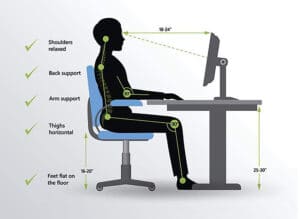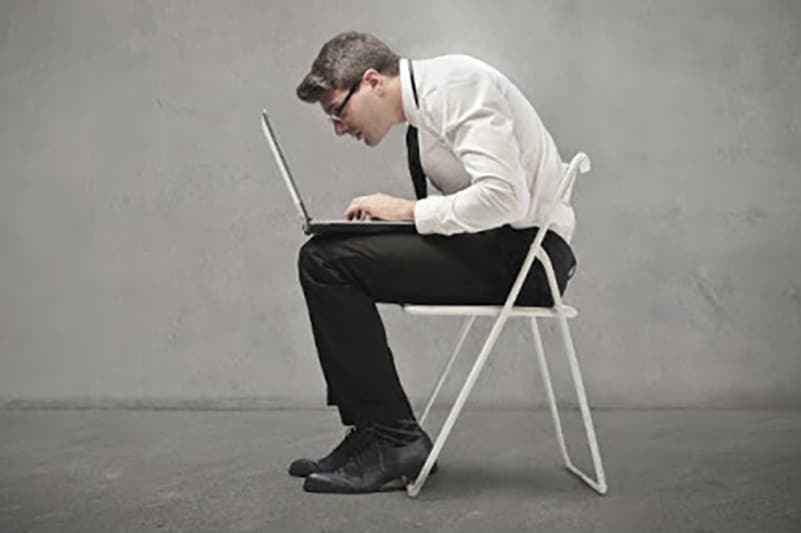Ergonomic standards for desk set-up
• Ensure your feet are placed flat on the floor, or on a footrest directly beneath your knees.
• The height of your chair should allow your knees to be at 90-degrees with your hips in-line with your knees.
• The length of your seat pan should allow for a three-finger gap behind your knees when you are seated at the back of the chair. This will allow the nerves and vessels of the posterior knee to have better blood flow and nerve supply to the lower limb.
• Try to avoid sitting asymmetrically or crossing your legs when seated.
• Ideally, you should have, or look for, a chair that has lumbar support and adjustable armrests. You want to be able to use the chair to support the natural curvatures of your spine and upper body.
• The armrests should be flush with the desk surface (not above or below) to allow for the upper body to have support when computing. Many work-related shoulder and wrist aches and pains are due to a lack of constant armrest use. You can also increase your mouse pointer speed to decrease non-neutral wrist movements and excessive arm use.
• Have your flattened keyboard and mouse close to your body to allow you to lean into the backrest for support.
• Avoid wrist pad use that puts excessive pressure on your wrist or forearm. Flat and straight forearms and wrists are key for increased upper limb blood and nerve supply – less kinks in the hose.
• Our monitor screen(s) should be about an arm distance away and centred with your desk and chair. Your eye-line should be at the top 1/4 of the screen. This will decrease eye strain and limit unnecessary neck movements.
• Remind yourself to dynamically move and stretch every 30-minutes. This will help you increase your mental productivity and keep your blood from remaining stagnant. An increase in blood flow is an increase in the delivery of nutrients that your body needs to function optimally.

General tips to help you move more while working
• Read any paper documents in a standing posture.
• Stand/walk during some phone calls that don’t require access to the computer at the same time (use earbuds if possible so you don’t have to hold the phone).
• Avoid sitting at lunch for a change of posture.
• Take the longer route to the kitchen and washroom.
• Fill beverage containers half-way to promote going for refills more often.
• Use the stairs throughout your workday.









